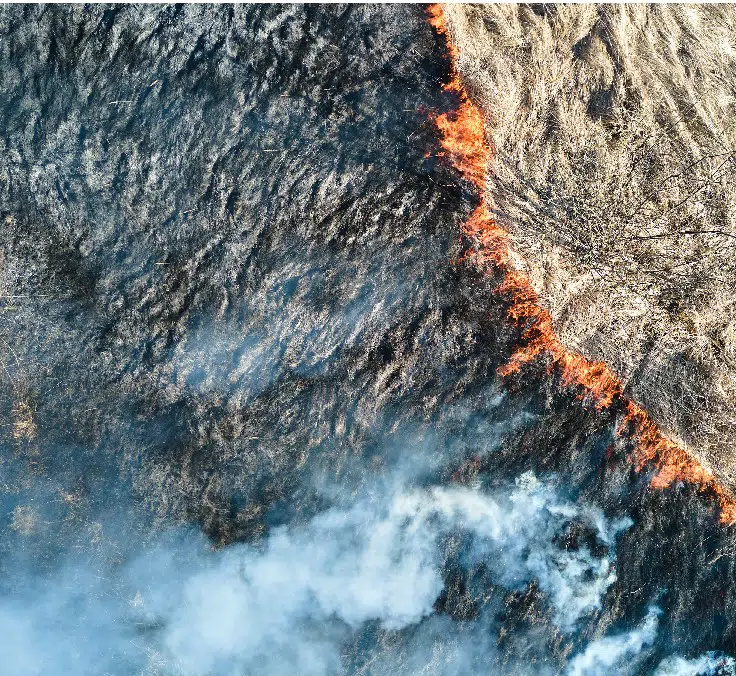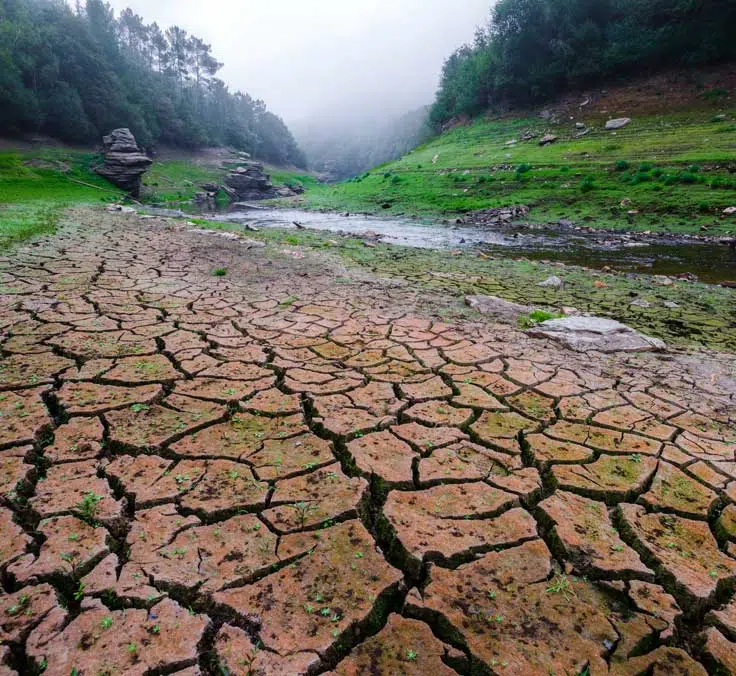INSURANCE| 21.07.2023
How do companies cover natural disaster risks in the face of climate change?
The largest homeowners’ insurer in the United States has recently announced that it will no longer insure new homes in California due to the growing risk of wildfires. This is the most significant move in a trend that already has precedents in other regions exposed to floods, hurricanes, and fires.
In the face of climate change and a more than foreseeable increase in risk, these difficulties call into question how the insurance industry can continue to protect society while ensuring sustainability.
What is the impact of climate change on natural disasters?
“Climate change is not a danger in itself; it should not be confused with the risk derived from climate events,” explains Juan Satrústegui, director of Natural Perils at MAPFRE RE, MAPFRE’s reinsurance arm. On the one hand, “climate risk has always existed, as intense atmospheric phenomena can cause major damage,” he adds. Some natural disasters, such as fires, hurricanes, floods or droughts, are related to the climate, although there are other catastrophes that are not related, such as earthquakes or volcanoes.
Climate change, on the other hand, is the long-term alteration of the climate caused by humans, “which causes, among other things, a highly significant variation in the frequency and intensity of many natural phenomena” of atmospheric origin. Climate change, therefore, “is not so much a danger in itself as it is an accelerator of the danger that already existed,” he says.
Its impact on the loss ratio is difficult to measure in the short term. “There is no exact formula for measuring to what extent a disaster that occurs today is attributable to climate change,” says Juan Satrústegui. In any case, “the trend is clear: the risk will increase in many regions, both because of the greater danger and because of the increase in the population exposed to the phenomena.”
The protection offered by insurance against disasters
The insurance sector plays an important role in compensating policyholders for the damage caused by natural disasters and in helping citizens, companies, and public authorities to recover from their economic impact. However, precisely because of their destructive potential and the millions of dollars in losses they can cause, this type of risk requires more complex protection schemes, including public-private partnerships or pooling risks between companies through reinsurance.
Some factors that affect coverage of natural disasters include:
- The frequency and intensity of disasters.
- The proportion of the country exposed to major disasters. The greater the exposure, the greater the potential economic impact on a country’s economy, and the greater the risk awareness.
- The degree of financial strength. The stronger a country’s economy, the greater the ability of the insurance sector and/or the public administration to provide more coverage for citizens in the event of disasters.
- Economic policy. The degree to which a government intervenes in its economy will make it more or less likely to finance or promote public or private coverage schemes.
- Insurance penetration. If there is a high degree of insurance in the population, insurance will play a significant role in the overall solution. This “will depend on the purchasing power of each society, the degree of risk perception, and whether insurance schemes offer affordable and sustainable solutions to the various natural hazards,” MAPFRE RE affirms.
These conditions produce different outcomes for insurance coverage for natural disasters.
- Highly developed societies, such as Germany, France or the United States, have insurance schemes that pivot between the responses of public systems and private actors. For example, flooding in residential risks is covered by public schemes in the USA and France, albeit to a different degree in each country; in Germany, the same coverage is assumed entirely by the private sector.
- In Spain, the Insurance Compensation Consortium protects policyholders against most events of this nature. This public body is funded by the contribution of a small percentage of each insurance policy taken out. While it is an internationally recognized success story, “this successful formula is not easily transferable to other countries where disasters occur more frequently and more severely than in Spain,” says Juan Satrústegui.
- However, in large parts of the world, some of which are highly vulnerable to extreme weather events, there are still many gaps in disaster protection. In many countries, the private sector does not have the capacity to provide effective coverage, and public assistance is insufficient to mitigate the economic effects of disasters.
A problem that needs global solutions
In a speech entitled Climate change, inflation, and internationalization, three challenges facing the world’s major insurance companies, MAPFRE CEO Antonio Huertas gave his vision of the problem: “Unfortunately, the frequency of these extreme events means that many parts of the world, especially the most vulnerable areas of the poorest countries, do not have coverage.”
According to the MAPFRE CEO, this circumstance “requires an international agreement that opens up access to sources of funding and insurance protection — public-private consortia in which we can all contribute our expertise.”
Insurance will continue to play a key role in compensating policyholders for damage caused by disasters and will work in the short and long term to adapt protection to the realities of climate change: in the short term, by monitoring the behavior of these events in order to apply the necessary adjustments to coverages and continue to protect society under a sustainable scheme; in the longer term, to understand how climate change will affect natural hazards, it will seek to identify new opportunities and estimate their impact on physical and transitional risks.
RELATED ARTICLES:




